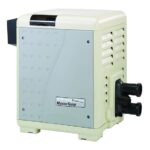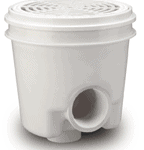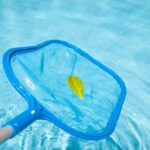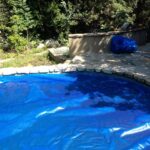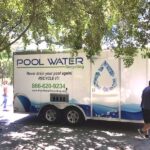Just like a pool or spa’s shell, the mechanical equipment that keeps everything running efficiently will benefit from regular maintenance. Most of these chores are simple, and if you perform them regularly—and understand the basic workings of the equipment—you’ll be able to spot and handle small problems before they turn into big ones.
Pool Pump Maintenance
The pump for a pool or spa requires very little maintenance. Pumps are generally self-priming—meaning they don’t have to be filled with water before you turn them on at the start of the season. But you’ll need to regularly clean out the strainer basket inside, in most cases once a week. To get to the basket, remove the top of the pump housing; refer to the owner’s manual to determine the specific location of your pump’s basket.
While you’re checking the basket, take a moment to inspect the condition of the O-ring or gasket that seals the lid of the pump housing. If it is cracked or has deteriorated, replace it; otherwise, the lid won’t be able to form the seal that’s needed to keep the pump in operation. Serious pump problems, such as an obvious water leak, will require professional help.
Pool Filter Maintenance
No matter which type of filter you have in your pool or spa—cartridge, sand, or diatomaceous earth—it will need periodic cleaning to keep the water clear. Depending on the type of filter and how heavily you use your pool or spa, filter cleaning frequency can range anywhere from once a month to three or four times each year.
Contrary to what you might expect, cleaning the filter more often than that doesn’t help. In fact it hinders the filtration process. That’s because a slightly dirty filter is actually more efficient than a perfectly clean one. The particles of dirt lodged in it help trap additional particles, removing debris from the water more quickly.
Ideally, the filter should be cleaned before any deterioration in water quality is noticeable. To avoid having any problems, check the pressure gauge and the flow meter in the pool—one is positioned on the line into the filter, the other on the return line out of the filter. As the filter becomes dirty, the difference in flow between the gauges will increase.
When the difference reaches 10 to 15 pounds per square inch, it’s time to clean the filter. (See the chart below for general cleaning advice; follow the manufacturer’s instructions for more specifics.)
Pool Heater Maintenance
Of all the equipment connected to a pool or spa, the heater requires the least maintenance. Gas heaters, for instance, can usually go for a year or two—sometimes longer—before they need professional servicing, and electric heaters can go longer still. With either type, check the manufacturer’s recommendations. If the heater doesn’t warm up the water, calcium scales might be building up in its tubes, restricting the flow. To solve the problem, have a professional disassemble the heater and clean out the tubes using acid or a wire brush.
Time-saving tip: Two strainer baskets are better than one. Buy an extra, and use them alternately. This will allow you to let the dirty basket dry out, making it easy to remove hair and other debris from it.
How to Clean a Pool Filter:
Cartridge filters:
Turn off the pump. Remove the filter, hose it off, and soak it in detergent according to the manufacturer’s instructions for removing oils. Repeat every three to four months.
Sand filters:
Turn off the pump. Circulate water through the filter in the reverse direction for about 10 minutes, a process known as backwashing. Repeat once per month.
Diatomaceous earth (DE) filters:
Turn off the pump. Backwash the filter (see above), then add more diatomaceous earth to the skimmers. Water will carry the D.E. to the filter and recoat it. Repeat every three to four months.
Pool Pump & Filter Problems
Common swimming pool pump and filter problems and easy repairs:
Sudden decrease in water flow rate
Symptom: Obstructions in the supply line, preventing water from being pulled into the pump.
Repair: Shut the pump off immediately, to prevent it from overheating and burning out. Check for blockages in both the pump and the skimmer strainer baskets.
Swimming pool pump runs but doesn’t pump water
Symptom: Low water level in the pool; a clogged filter; damage to the impeller inside the pump; air leaks in intake lines.
Repair: If the pump is hot, shut it off immediately to avoid burnout. Check the water level and add more water if needed. Check the filter, and clean or replace it. If the pump still does not work, call a technician to check for impeller damage or air leaks.
Leaking pool pump
Symptom: A deteriorated seal around the pump shaft.
Repair: Replace the seal according to the instructions in the owner’s manual.
Noisy pool pump
Symptom: An oversized new pump, which is trying to discharge more water than is coming in; something jammed inside the impeller of an old pump.
Repair: If the pump is oversized for the piping system, switch to a smaller pump. If the pump is an older one, check the impeller and remove any obstructions according to the owner’s manual.


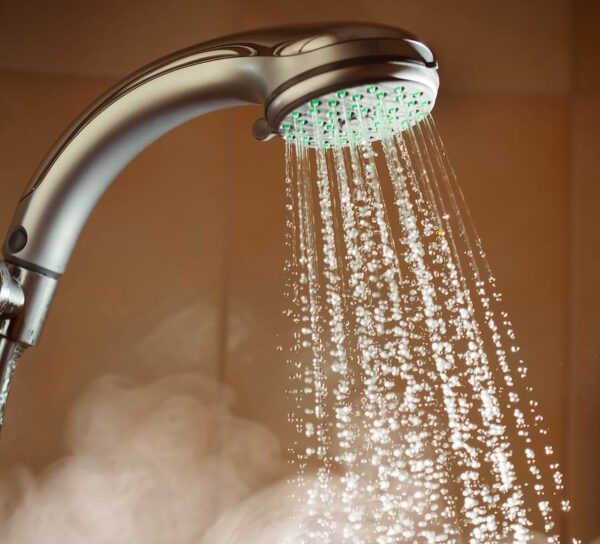
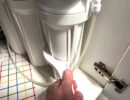
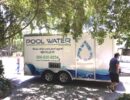
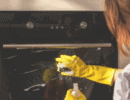
 Don Vandervort writes or edits every article at HomeTips. Don has:
Don Vandervort writes or edits every article at HomeTips. Don has:
